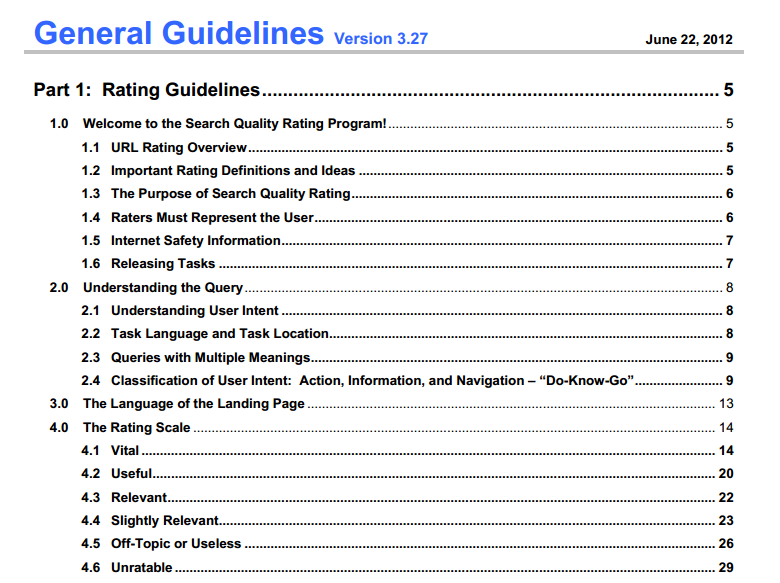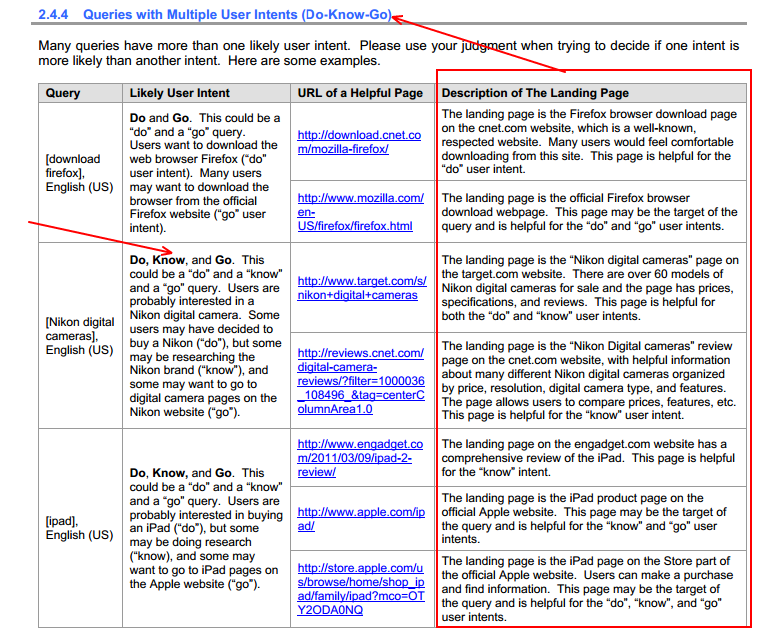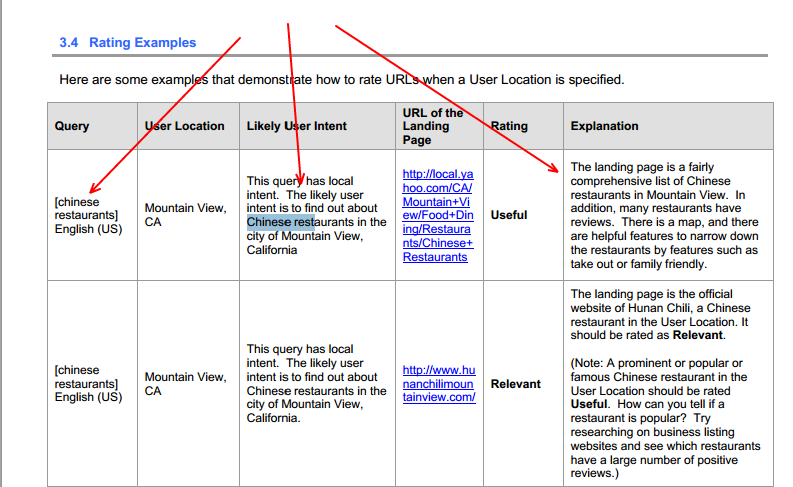On September 06, 2012, Google’s Guideline Handbook was leaked online dated as June 22, 2012 – The document was prepared for search quality raters that Google employ using contractors. Google has more than 4,500 people around the world evaluating the search results and assigning scores – that further get defined in Google’s search algorithm.
The recent 2012 Google Guideline Handbook leaked online by unknown user under a pseudonym name – speculated by many SEOs to be a ‘search rater’, provided insights into Google’s understanding of page quality, keyword intents and different elements of what Google prefer as the ranking pillars of pages in Google.
While the document is 161 pages long, I have taken out the most important information for us to know – derived from the leaked document.
Before we dive into the important information, I’d like to put emphasis on our methodology here – Google’s search quality guideline is at the core of SEOreseller.com methodology and defined into our operation DNA, this leaked document is just an empirical evidence that Google indeed employs to get the efficacy of search results from employing search raters.
Quality Content
Some of the characteristics of a low quality think content defined in the leaked document are:
• Unclear purpose of the page – a page that fails to serve the purpose that user intended to look for in a page.
• Cookie cutter text or functionality – a website that has repetitive block of text repeated on every page that serves no purpose and irrelevant to the user query.
• No original images on the page – the images are taken from different source without linking to original source or no original images found on the site.
• Extreme negative reputation of the page – the page has recieved multiple negative reviews on the web through comments, and other public message boards.
• A website without any absolute information on how to contact the owner – lack of transparency on the website and authenticity.
‘Do-Know-Go’ Query Interpretation To Evaluate Landing Pages
Queries can have several intends, it could be done to look for information, buy product, or just to navigate. The document has categorized these queries in a ‘Do-Know-Go’ methodology for search raters to rate pages based on the following.
Do – action intend for people who want to make a purchase, download a software or play game online. These are queries that are categorized as ‘actions’ performed online by people.
Know – these are queries where people only like to read information. For example, pages by wikipedia.org falls under this category.
Go – this is a query when people like to navigate through the page to reach to a specific page to fullfull their purpose. For example, I may search for “OSHA” in Google to look for official osha.gov and dig deeper for “osha 10 hour training requirements” on their website.
Identifying Pages With Helpful Purpose
The document define page with different purposes. These are some of the purposes of web pages that Google understand on pages.
• To share objective information about a topic
• To share personal or social information
• To express an opinion or point of view
• To entertain
• To share pictures, videos, or other forms of media
• To sell products or services
• To allow users to post questions so that other users can answer
• To allow users to share files or to download software
Lack of purpose and failing to serve the purpose 100% accurately will be rated as lowest quality indicator in Google. Takeway is to make sure you serve the purpose of your page as briefly as possible.
Query Deserve Content Freshness Model – Updated Websites Are Ranked Higher
Officials from Google has talked about deserves freshness model in their algorithm in the past, but this document mentions the model in a slightly different sense, although, the intent is the same.
High quality websites stay current, and frequently updated. In return, users can trust this kind of website because they maintain their content and not outdated. Google takes this very seriously, specially in the medical advice vertical where information can change often.
Here are some top elements that Google looks at when evaluating whether or not the website is updated and maintained.
• Copyright dates
• Evidence of recent updated
• Blog post updates
Local Intended Queries
We all know the importance of Local SEO, Google leaked guideline put serious emphasis on understanding the user intend for location sensitive queries and mention this to be a the most important steps in assigning rating to a land page.
Google finds it hard to determine the intend of local queries, and I am guessing this is why they have hired human search raters to do this job.
Here are some of the signals that Google may be looking at to determine the intend of the query and the page relevancy to the query.
• Queries with user location.
• A map of the listings.
• Narrow down the listings by features such as whether it is family friendly or not.
• Local pages are ranked by most popular reviews.
It’s great to see Google confirming what we’ve been teaching for a few years in organic SEO methodology. For more great methods of sharing content, and gaining an organic buzz from your clients, use our White Label SEO services.







